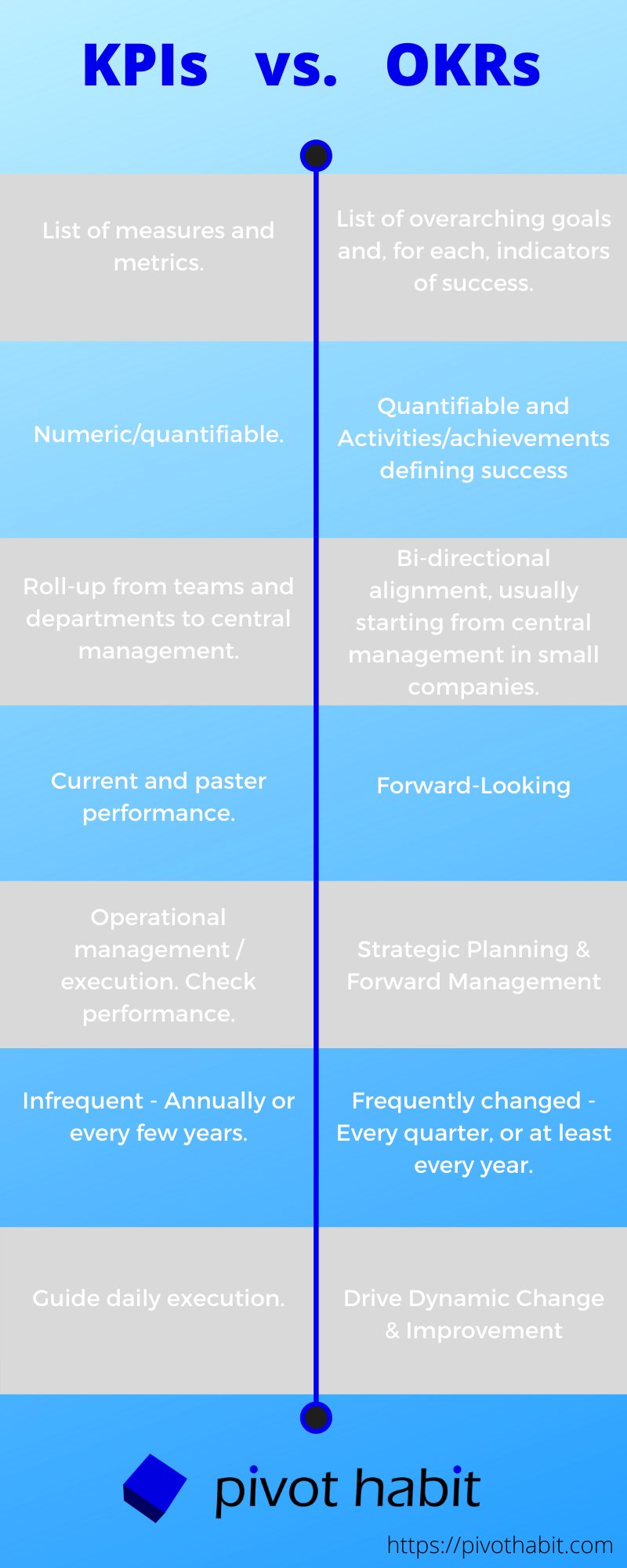There is a normal way to use Key Performance Indicators, and a way to get a bit more “juice” out of the process. The “juicier” way brings KPIs into the strategic planning and alignment process. Let’s take a quick look at both.
KPIs, the Normal Way

If you’ve been through my other posts on implementing KPIs, you know that at their heart, KPIs are simply measures or metrics. Done well, they focus not only on outcomes, but also on the actions that lead to positive outcomes.
In this way, KPIs are the most critical and vital data points about the business. Indeed, part of the best value KPIs provide is that they clarify so much information about the business in so little time. But left as data points, they are just that… just data points.
KPIs as Alignment

There is one critical function KPIs provide on their own as simple data points: focus and alignment. By identifying the most critical data points about the company, everyone is automatically clear about what matters, how it’s measured, and where to focus effort.
Perhaps it’s just my experience, but the last time I purchased a vehicle, it was very clear what my sales associate was focused on. You may be thinking, of course, his focus was “making the sale.” But it wasn’t. I don’t know whether it was just this particular brand or this particular dealership, but someone finally realized a truism: If I’m present in a car dealership, chances are great that I want to buy a car, so stop worrying about trying to sell a car, and start focusing on discovering and addressing my actual concerns.
The sales associate took pains to uncover my real concern: the model I wanted wasn’t going to be in stock before my lease ran out. He arranged a loaner, at no cost to me, for whatever duration until the model arrived, if I’d agree to the sale.
Fast-forward three weeks of free vehicle rental later, my sales agent didn’t need to remind me of what I already knew. Following the sale, I would receive a survey from the automaker about the level of service I had received from the dealer, and high marks are critical. How do you suppose I scored my dealer experience?
Good KPIs align attention, behavior – everything – toward what is important.
KPIs as Strategy

But we can take KPIs further and use them as tools in the strategic planning and execution process simply by adding goals. I want to be careful here to draw a distinction.
In my method here at Pivot Habit, if you use my worksheet and what I outline about creating a Performance Budget, you will in fact create monthly “Plan” numbers for every month of your planning period, and for every KPI. By default, this is nothing more than “forecasting.” That’s not the same as strategic planning or goal setting. Let’s draw the distinction.
A forecast is simply a prediction of the future trend given current conditions and effort. For example, if last year you did revenue of $10M and you’ve been growing at about 10% per year, you might forecast revenue of $11M this year and break out monthly plan numbers that show that. That’s your forecast.
Strategy and goals come into play if you’ve got something new up your sleeve this year that means that $11M forecast doesn’t cut it. For example, maybe your strategy for the new year is to introduce a new product line. Your research shows strong early demand, and you’ve set a goal for $1M of new revenue for the first year.
You might choose to represent this revenue as it’s own “New Revenue” KPI, wrap it in to overall revenue and map out $12M in revenue for the year, or some other way. The point is now you’re not just forecasting against current conditions. You’re adding in goal setting which is all about changing conditions for an improved result.
Back to Index | Next: KPI Cadence and Time Frame
![]()
Download the KPI Planning and Tracking Worksheet
Save hours of work by starting with a pre-made Excel Workbook featuring examples, explanations, and built-in calculations.

















